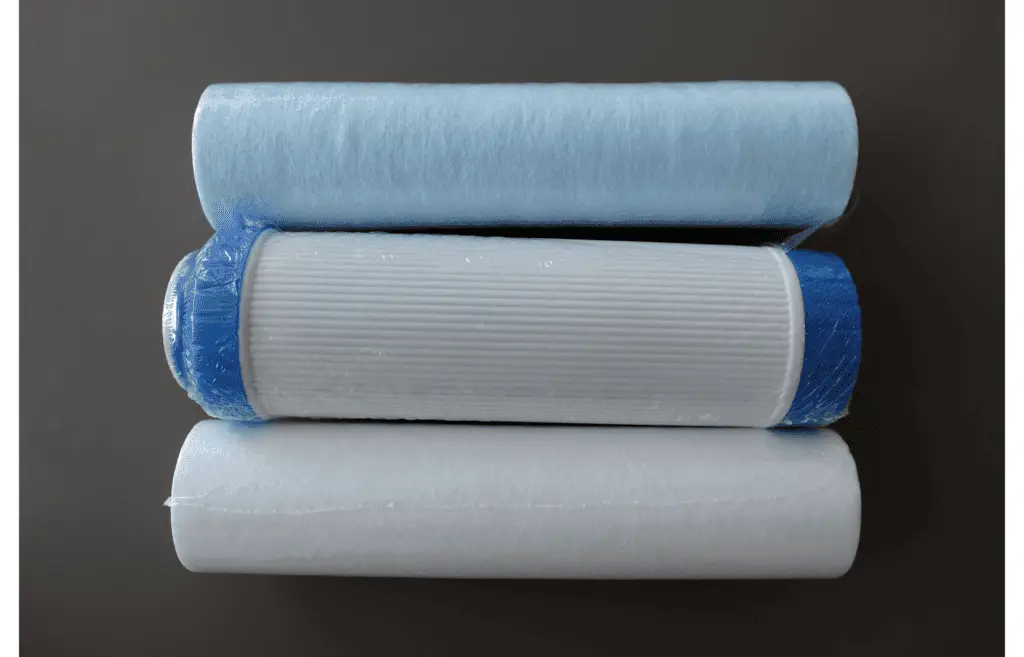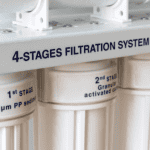In this exploration of water purification methods, we pivot our focus to one key question: Does reverse osmosis remove fluoride?
What is Fluoride?
Fluoride is a naturally occurring mineral. It’s found in various concentrations in all water sources, including fresh and seawater. In many regions, it’s added to municipal water supplies to promote dental health. However, too much fluoride can lead to health problems like dental fluorosis and skeletal fluorosis.
The Need for Fluoride Removal
While a certain level of fluoride is beneficial for dental health, excessive amounts can cause adverse effects. This paradoxical nature is akin to walking a tightrope; maintaining balance is essential, but challenging. Dental fluorosis, a condition resulting from excessive fluoride, manifests as white spots on teeth. In more severe cases, skeletal fluorosis can occur, which can lead to joint pain and bone damage.
What is Reverse Osmosis?
Now let’s shift our lens to reverse osmosis. Much like a busy traffic cop directing cars, reverse osmosis is a water filtration process that removes contaminants by using pressure to force water molecules through a semi-permeable membrane. This process filters out impurities, leaving clean, purified water.
Does Reverse Osmosis Remove Fluoride?
The heart of the matter is whether reverse osmosis effectively eliminates fluoride. Imagine fluoride as a troublemaker trying to gatecrash a party. The semi-permeable membrane of the reverse osmosis system acts like a strict bouncer, allowing only the desired guests (water molecules) to pass and keeping the troublemaker (fluoride) at bay.

A study published in the Journal of Membrane Science shows that reverse osmosis membranes can remove up to 96% of fluoride. Here’s a simple breakdown of what reverse osmosis can remove:
| Contaminants | Percentage Removal |
|---|---|
| Fluoride | 85-96% |
| Lead | 95-98% |
| Chlorine | 97-98% |
| Dissolved salts | 95-99% |
Choosing a Reverse Osmosis System
There are myriad reverse osmosis systems available in the market. Making a choice can feel like navigating a maze, but knowing your needs can serve as your compass. When choosing a system, consider factors like the level of fluoride in your water, the number of stages in the filtration process, and system maintenance requirements.
Understanding Fluoride Levels in Water
To get a grip on the fluoride issue, it helps to understand its levels in your water supply. It’s like taking the temperature before deciding on the day’s attire. The U.S. Public Health Service recommends a fluoride concentration of 0.7 mg/L as optimal for community water systems. Anything above 1.5 mg/L is considered high and may require action.
Testing for Fluoride in Water
The first step to ascertain the fluoride level in your water is testing. This is similar to a detective gathering clues to solve a case. Various test kits are available, including colorimetric methods and digital meters. Professional laboratories can also provide more accurate testing services.
Alternatives to Reverse Osmosis
While reverse osmosis proves effective, it’s not the only player on the team. Other options include activated alumina and bone char filters. Activated alumina, like a sponge soaking up water, attracts fluoride ions and traps them in its porous structure. Bone char filters, a more environmentally friendly option, utilize crushed animal bones to capture fluoride.
Conserving Water with Reverse Osmosis
One caveat to reverse osmosis systems is that they generate wastewater, much like a bookworm might leave a pile of read books. A conventional reverse osmosis system wastes two to three gallons of water for every gallon it purifies. Fortunately, modern systems come equipped with water-saving technology, reducing this ratio significantly.
Maintenance of Reverse Osmosis Systems
Maintaining a reverse osmosis system is akin to taking a car for regular servicing. The semi-permeable membrane requires replacement every two to three years. The pre-filters, which protect the membrane from sediment and chlorine damage, should be changed annually. Regular upkeep ensures that your system remains effective and long-lasting.

Conclusion
The journey through the water purification landscape brings us to a clear conclusion. Yes, reverse osmosis does effectively remove fluoride from water. It serves as an excellent method to keep your water clean and safe. However, it’s essential to consider your individual requirements when choosing a system. Like a key fitting perfectly into a lock, an appropriate water filtration system can bring the assurance of health and well-being.
Frequently Asked Questions
Q1: What is fluoride?
Fluoride is a naturally occurring mineral found in all water sources. It’s often added to municipal water supplies to promote dental health, but excessive amounts can lead to dental and skeletal fluorosis.
Q2: Why is fluoride removal necessary?
While fluoride is beneficial for dental health in moderate amounts, too much can cause dental fluorosis (manifesting as white spots on teeth) and in severe cases, skeletal fluorosis which can lead to joint pain and bone damage.
Q3: What is reverse osmosis?
Reverse osmosis is a water filtration process that uses pressure to force water molecules through a semi-permeable membrane, effectively removing impurities and leaving clean, purified water.
Q4: Can reverse osmosis remove fluoride from water?
Yes, a study in the Journal of Membrane Science shows that reverse osmosis membranes can remove up to 96% of fluoride.
Q5: What factors should be considered when choosing a reverse osmosis system?
Factors to consider include the level of fluoride in your water, the number of stages in the filtration process, and system maintenance requirements.
Q6: How can I test for fluoride in my water?
Various test kits are available for home use, including colorimetric methods and digital meters. Alternatively, professional laboratories can provide more accurate testing services.
Q7: Are there alternatives to reverse osmosis for fluoride removal?
Yes, alternatives include activated alumina and bone char filters.
Q8: Do reverse osmosis systems waste water?
Traditional reverse osmosis systems do generate wastewater, typically wasting two to three gallons for every gallon purified. However, many modern systems have water-saving technology that significantly reduces this ratio.
Q9: How often should I maintain my reverse osmosis system?
The semi-permeable membrane should be replaced every two to three years, and the pre-filters should be changed annually to ensure the effectiveness and longevity of the system.









